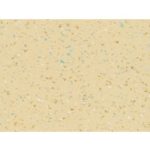Vinyl floors are able to offer homeowners with a truly attractive and hard-wearing option if they are looking for alternatives to traditional materials such as wood and stone.
Although this technology has existed for some time, the majority of consumers are unaware of how this flooring is made within factory settings. Let us take a quick look at what steps are involved in order to appreciate just how innovative this material truly is.
Liquid Suspension
Sheet vinyl flooring is made from a material known as polyvinyl chloride (PVC). The PVC is first suspended in a viscous material known as Plastisol. This liquid is then allowed to dry until it chemically fuses with the PVC; creating a "sandwich" effect.
Supporting and Protecting the Vinyl Core
Once the PVC sandwich has sufficiently dried, another layer will be applied. This backing is comprised of a number of fibrous components; providing the
vinyl floor tiles with a much greater degree of flexibility and durability. A decorative pattern is then printed on the obverse of the tiles.
As you may have imagined, the choices in regards to styles and colours are nearly limitless. Finally, an additional thin layer of clear vinyl is placed over these patterns. This layer is crucial in order to protect the design from wear and tear due to foot traffic.
Imparting Textures Upon the Vinyl
Many floor tiles are provided with some type of texture. This is meant to mimic the look at feel of natural materials such as carved stone. Textures are accomplished by varying the amount of heat that is applied during the drying process as well as through an embossing procedure. While not all vinyl floors are associated with textures, these are extremely popular options.
To learn more about the milieu of vinyl flooring solutions, please contact one of our specialists.


